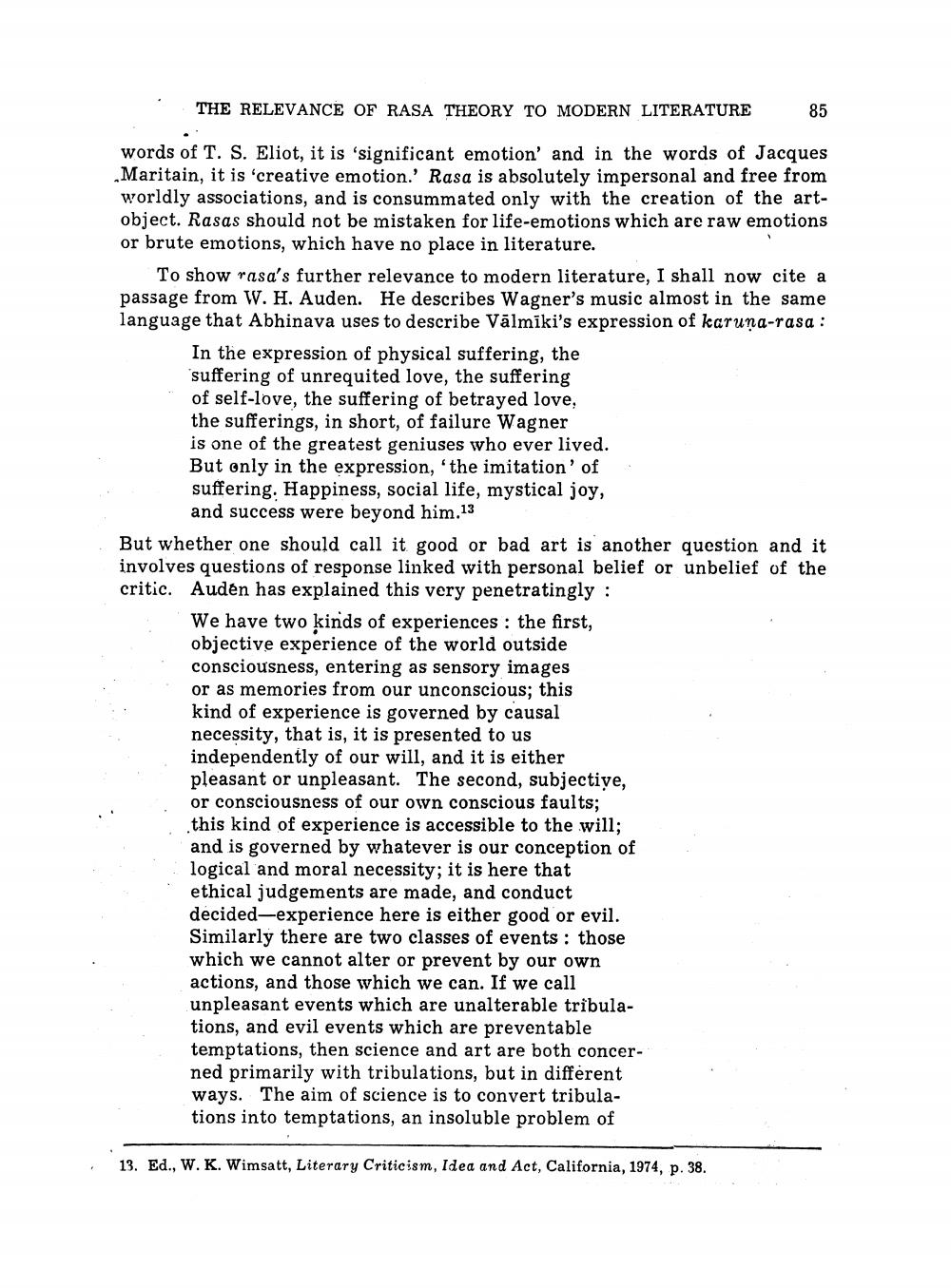________________
THE RELEVANCE OF RASA THEORY TO MODERN LITERATURE
85
words of T. S. Eliot, it is significant emotion and in the words of Jacques Maritain, it is 'creative emotion.' Rasa is absolutely impersonal and free from worldly associations, and is consummated only with the creation of the artobject. Rasas should not be mistaken for life-emotions which are raw emotions or brute emotions, which have no place in literature.
To show rasa's further relevance to modern literature, I shall now cite a passage from W. H. Auden. He describes Wagner's music almost in the same language that Abhinava uses to describe Vālmīki's expression of karuna-rasa :
In the expression of physical suffering, the suffering of unrequited love, the suffering of self-love, the suffering of betrayed love, the sufferings, in short, of failure Wagner is one of the greatest geniuses who ever lived. But only in the expression, 'the imitation of suffering. Happiness, social life, mystical joy,
and success were beyond him.13 But whether one should call it good or bad art is another question and it involves questions of response linked with personal belief or unbelief of the critic. Auden has explained this very penetratingly :
We have two kinds of experiences : the first, objective experience of the world outside consciousness, entering as sensory images or as memories from our unconscious; this kind of experience is governed by causal necessity, that is, it is presented to us independently of our will, and it is either pleasant or unpleasant. The second, subjective, or consciousness of our own conscious faults; this kind of experience is accessible to the will; and is governed by whatever is our conception of logical and moral necessity; it is here that ethical judgements are made, and conduct decided-experience here is either good or evil. Similarly there are two classes of events : those which we cannot alter or prevent by our own actions, and those which we can. If we call unpleasant events which are unalterable tribulations, and evil events which are preventable temptations, then science and art are both concerned primarily with tribulations, but in different ways. The aim of science is to convert tribulations into temptations, an insoluble problem of
13. Ed., W. K. Wimsatt, Literary Criticism, Idea and Act, California, 1974, p. 38.




